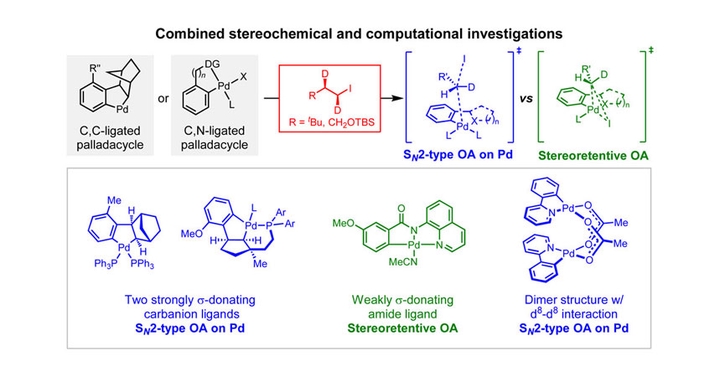The Stereochemistry of the Reactions between Palladacycle Complexes and Primary Alkyl Iodides.

Abstract
As an important elementary step in organometallic chemistry, the alkylation reaction of palladacycle complexes and alkyl halides has attracted much attention in recent years due to their presence as key step in palladium catalyzed C-H alkylation reactions. In principle, several alkylation mechanisms, such as the stereoinvertive SN2-type mechanism and the stereoretentive oxidative addition (OA) mechanism can be operated, and mechanistic insights can be obtained from the stereochemical outcomes of these alkylation reactions. Previous stereochemical investigations on the alkylation reaction of palladacycle complexes mainly focused on the use of chiral secondary alkyl halides as stereochemical probes, leaving more synthetically relevant primary alkyl iodides untouched. In this work, deuterium-labeled primary alkyl iodides were selected as a stereochemical probe, and their reaction with C,C- and C,X-type palladacycle complexes, namely Catellani-type palladacycle intermediates and directing group (DG)-coordinated palladacycle complexes, were investigated both experimentally and computationally to elucidate the alkylation mechanism. We found that, the C,C-ligated palladacycle intermediates undergo alkylation through the SN2-Pd mechanism, while the C,X-ligated 8-aminoquinolin-derived palladacycle complex favors an OA mechanism. In addition, the 2-phenylpyridine-derived C,X-type palladacycle dimer complex was found to react through the SN2-Pd mechanism due to its stable dimer structure and the d8-d8 interaction between two palladium atoms.
Note: This article was posted on ChemRxiv as a preprint before its publication. Please visit DOI:10.26434/chemrxiv-2023-zjhqq for details.